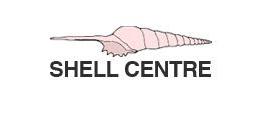GMC9: Costing a project
This list contains a collection of resources to help meet General Mathematical Competency 9 (GMC9). More resources to support T level Science can be found on our T Level science resource packages page.
GMC9 states:
Students are required to carry out a product costing on a new product and on a modification to an existing product, by calculating individual component costs, production run costs and distribution and transportation costs.
Students should undertake cost-comparison in order to reduce costs where appropriate, for example, premium ingredients versus cheaper substitutions.
Students should consider how to reduce costs, for example, more accurate measurements can be more expensive to perform due to equipment costs and/or time costs; higher accuracy than required can lead to increased cost.
Managing Costs
This film shows how Brompton Bicycles uses standard costing to keep track of where money is being spent during the production process.
The film describes three manufacturing cost elements: direct materials, direct labour and factory overheads, and these can be used to identify a standard cost per unit.
Calculating the cost of products
This worksheet challenges students to calculate the cost of various products. It provides worked examples, examiners top tips and answers to each question.
Quantity Surveyor A Day in the Office
This maths in construction resource explores some common maths that a Quantity Surveyor uses while at work—most commonly to do with calculating areas and assessing the cost of a project. The session includes a group activity where students work together to calculate the costs of paint that would be needed for a building refurbishment.
Taxi Cabs
In this task students are asked to organise a trip to the airport for 75 people. A combination of small and large taxis can be used. Students are told how many people each taxi can hold and how much each taxi costs and are required to find the cheapest solution.
Teacher guidance includes concepts which may be discussed with students, examples of probing questions which may be useful and assumptions that students need to make when completing the task.
The resource includes assessment guidance, a number of examples of students' work, together with comments, probing questions and feedback.
Day Out
In this task students plan a day out for thirty pupils based upon given information.
Students are required to simplify the task, summarise the unsorted data and represent the data mathematically. Costs need to be calculated and analysis interpreted in order to make a decision of which of the three suggestions is visited.
The resource includes teacher notes, assessment guidance, examples of students' work, together with comments, probing questions and feedback.
Ice Cream
In this task, students are planning to sell ice creams at their sports day.
Students are told how much a tub of ice cream costs, how much a cone costs and how much they are to sell each ice cream for. Students are also given a pie chart showing the results of a survey asking pupils their favourite flavour of ice cream.
Students have to decide how much of each flavour ice cream to buy in order to maximise their profits.
Plan a Trip
In this Shell Centre module students plan and undertake a class trip using costings, scheduling, surveys and everyday arithmetic.
In a card game simulation, groups undertake and record imaginary trips, encounter problems and errors of judgement, then seek to correct them by better planning. Groups share ideas of possible places to go and produce a leaflet explaining these ideas.
The class then work together to reach a decision on the best destination and look at possible means of transport. The class lists, and then shares out and undertakes the preparatory tasks that need to be done before the trip can take place. The trip now takes place and, afterwards, the students reflect on what happened.



